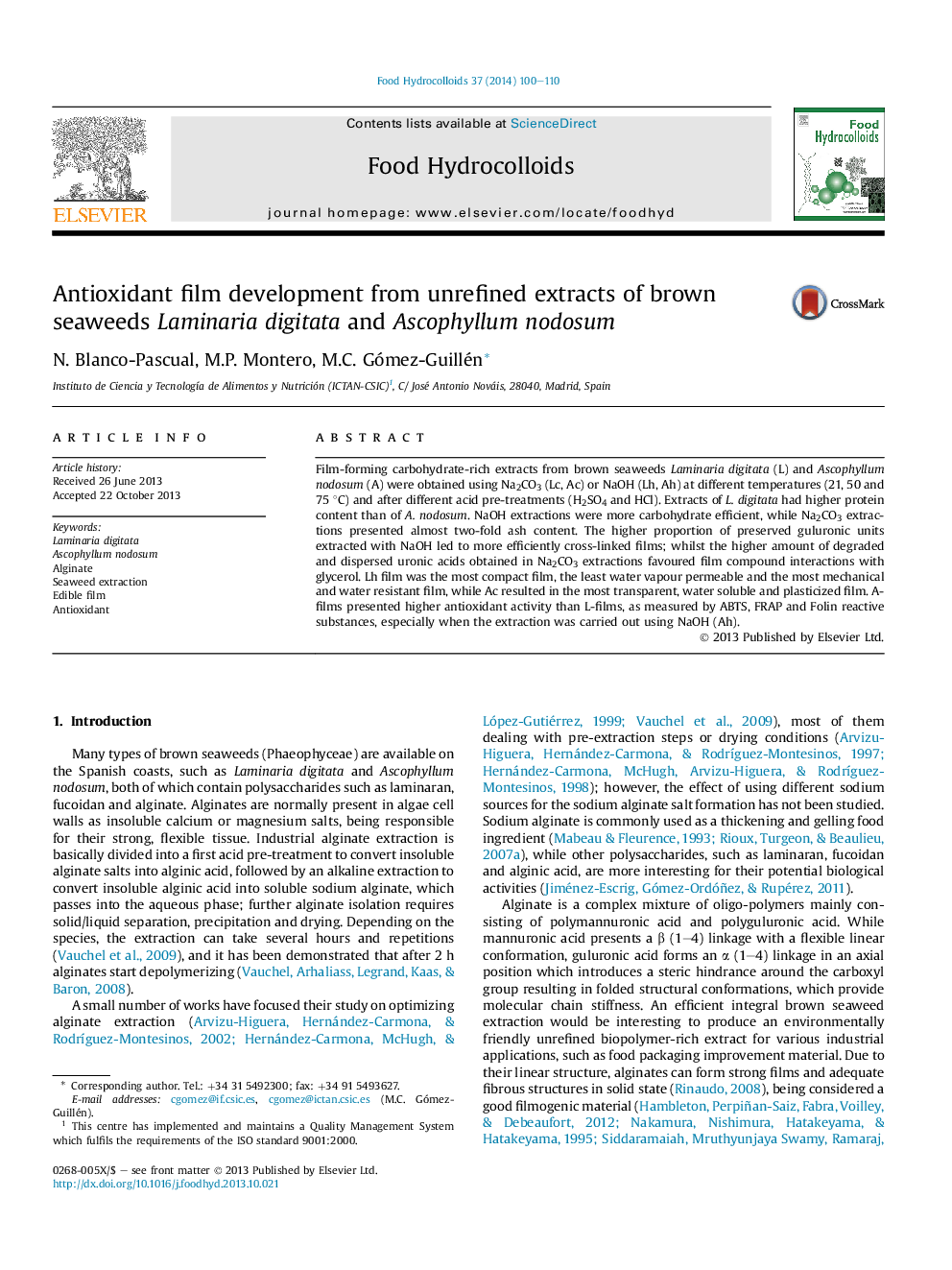| Article ID | Journal | Published Year | Pages | File Type |
|---|---|---|---|---|
| 605158 | Food Hydrocolloids | 2014 | 11 Pages |
Film-forming carbohydrate-rich extracts from brown seaweeds Laminaria digitata (L) and Ascophyllum nodosum (A) were obtained using Na2CO3 (Lc, Ac) or NaOH (Lh, Ah) at different temperatures (21, 50 and 75 °C) and after different acid pre-treatments (H2SO4 and HCl). Extracts of L. digitata had higher protein content than of A. nodosum. NaOH extractions were more carbohydrate efficient, while Na2CO3 extractions presented almost two-fold ash content. The higher proportion of preserved guluronic units extracted with NaOH led to more efficiently cross-linked films; whilst the higher amount of degraded and dispersed uronic acids obtained in Na2CO3 extractions favoured film compound interactions with glycerol. Lh film was the most compact film, the least water vapour permeable and the most mechanical and water resistant film, while Ac resulted in the most transparent, water soluble and plasticized film. A-films presented higher antioxidant activity than L-films, as measured by ABTS, FRAP and Folin reactive substances, especially when the extraction was carried out using NaOH (Ah).
Graphical abstractFigure optionsDownload full-size imageDownload as PowerPoint slide
